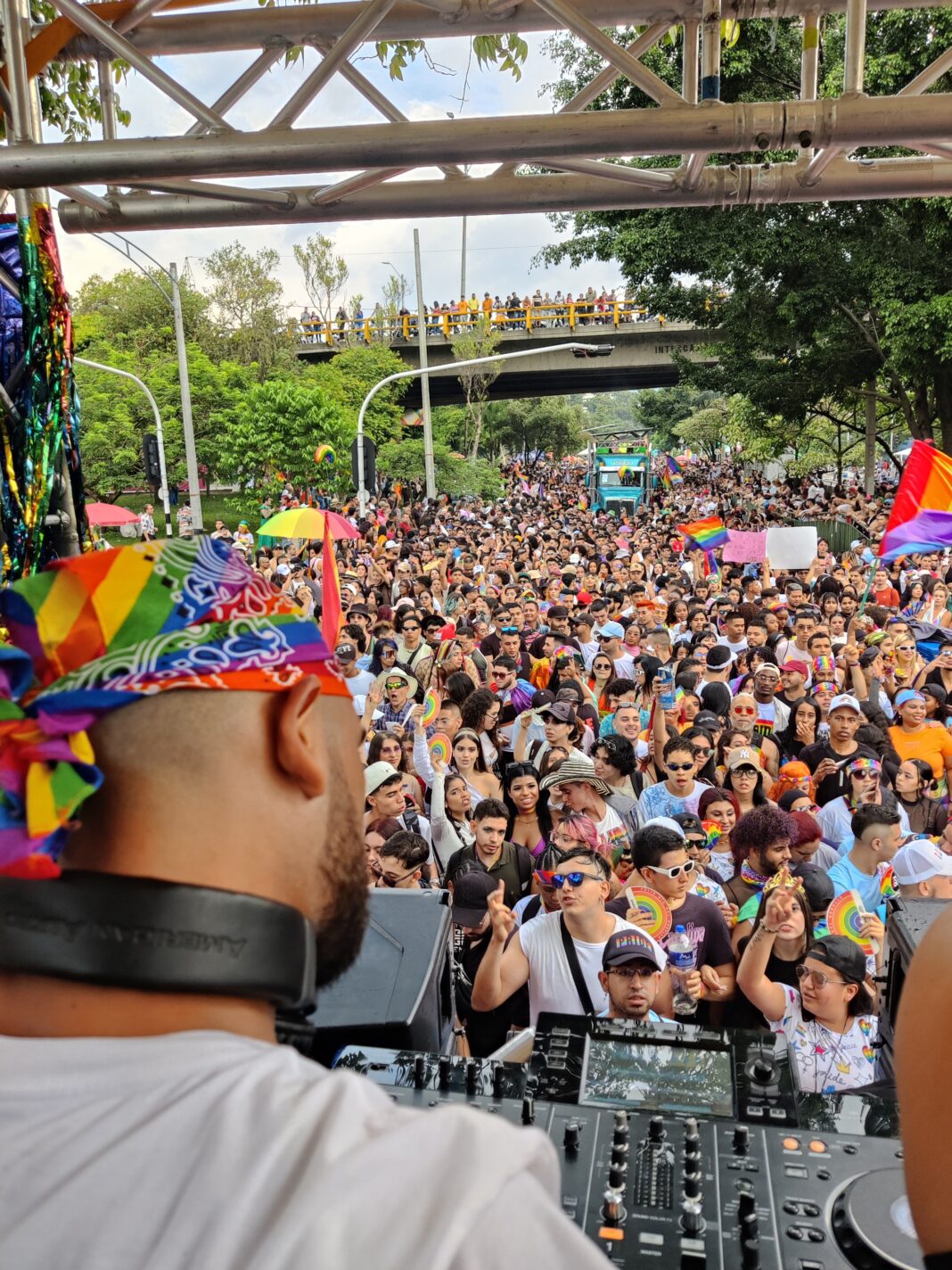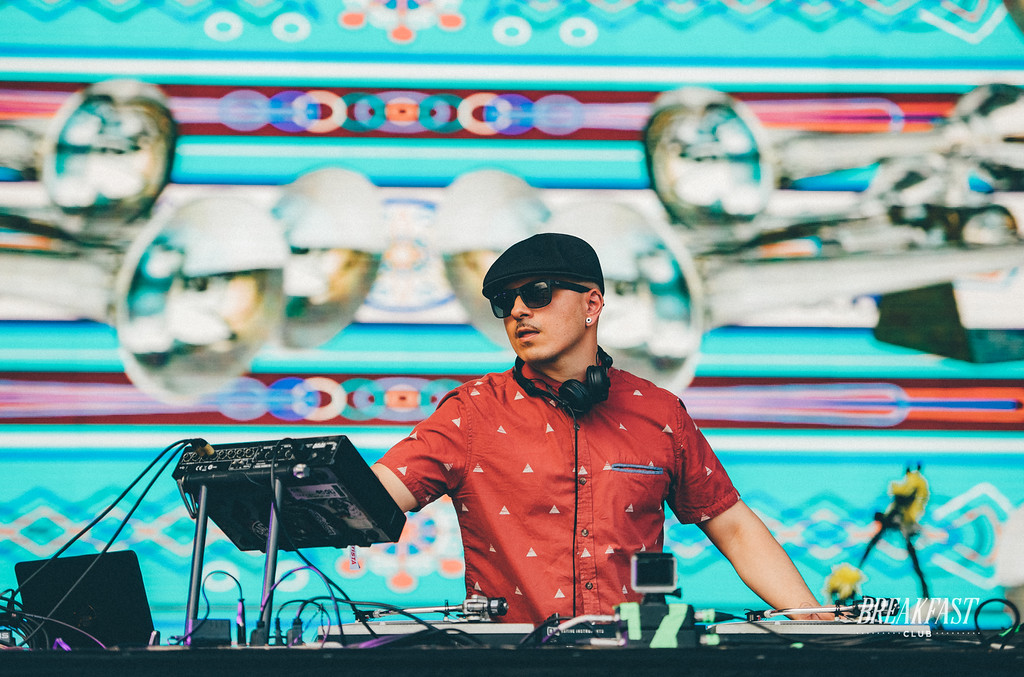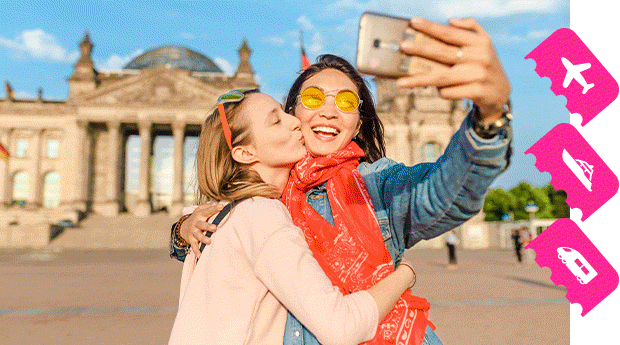Tucked inside the lush Aburrá Valley, cut off by mountains from other regions of Colombia, the city of Medellín has developed its own distinctive personality—friendly, bold, quirky and infinitely flirty. Compared to the culture of the national capital, Bogotá, known for being formal and bureaucratic, Paisas (the nickname for people from Medellín) are famous for their let’s-get-shit-done audacity. That spirit is part of what got the city into trouble back in the 1980s and ’90s—more than 30 years ago now—and what got it out of trouble as it has turned itself into one of the most seductive destinations in the Americas. The city of about 2.5-million people has a public transportation system with a two-line metro, trams and ski-lift-style gondolas for mountainside neighbourhoods, while Bogotá, a city of more than seven million, merely has buses. Even Medellín’s parks have wifi. As for cultural currency, it’s ground zero for Latin and reggaeton royalty like Karol G, Maluma, J Balvin and Juanes.
While mega clubs are not its thing, the city has an impressively lively LGBTQ+ community, with venues that can be sophisticated, glamorous, rowdy and naughty. Even before queer life became more open here over the last two decades, people from other regions of Colombia would joke about Paisas being bisexual. A group called Movimiento de Liberación Homosexual, and an accompanying magazine, was founded by writer and professor León Benhur Zuleta in the 1970s. The queer classic 2000 film Our Lady of the Assassins, based on a semi-autobiographical novel, gives viewers a glimpse of a sophisticated but hidden gay world in Medellín in the late 1980s/early 1990s, set amidst an absurd amount of drug violence.
These days, Medellín’s Pride festival demonstrates how big and proud the community has become. The 2023 parade attracted almost 100,000 attendees, who walked-slash-partied a five-kilometre route amidst a battalion of colourful, music-blaring floats. The parade’s end point, Plaza Cisneros, couldn’t handle all the people, who overflowed all through the downtown.
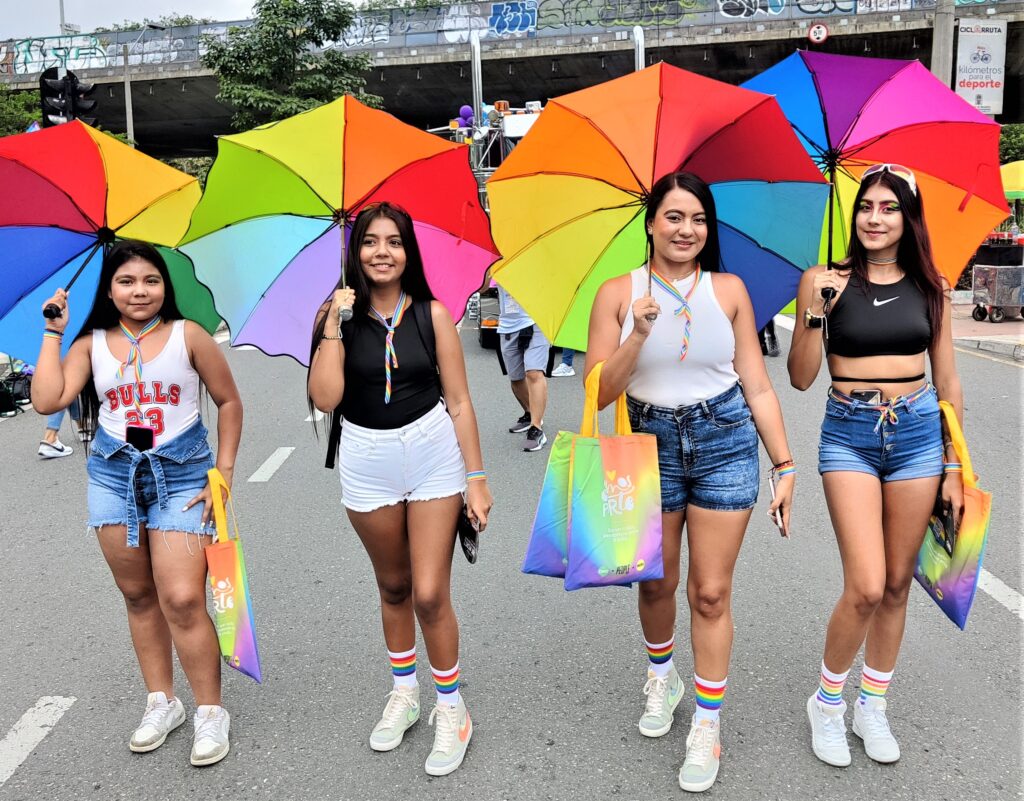
Most visitors to Medellín, along with the city’s swankiest citizens, hang out in El Poblado, a stylish upscale suburb a few kilometres south of downtown. That’s where the poshest and trendiest clubs, restaurants, shops and hotels are located—it’s a place that’s oh-so-casually, oh-so-cooly LGBTQ+ friendly. After dark, it’s a real scene. (Though El Poblado is considered quite safe, and the police presence is high, the abundance of foreigners does attract hustlers who have things to sell that maybe you shouldn’t be buying.)
Despite all this glamour, don’t get trapped in El Poblado—Medellín is about more than chic resto-bar-lounge-art-experiences, no matter how well it does them.

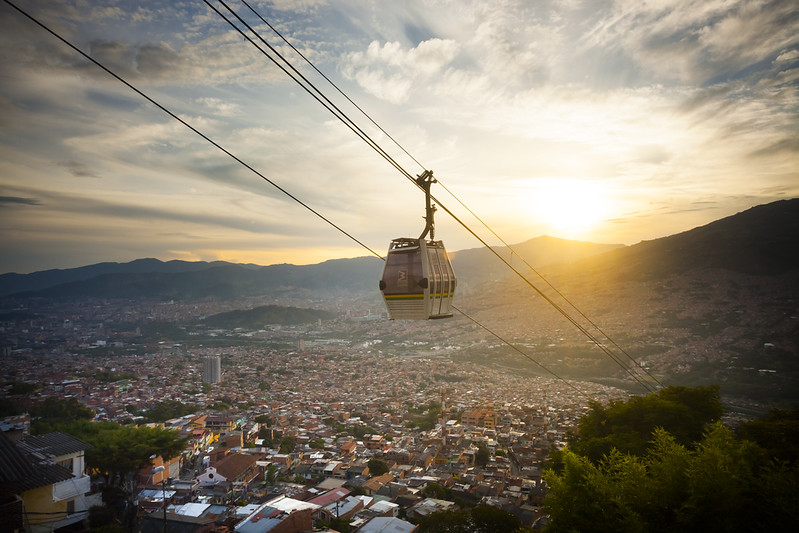
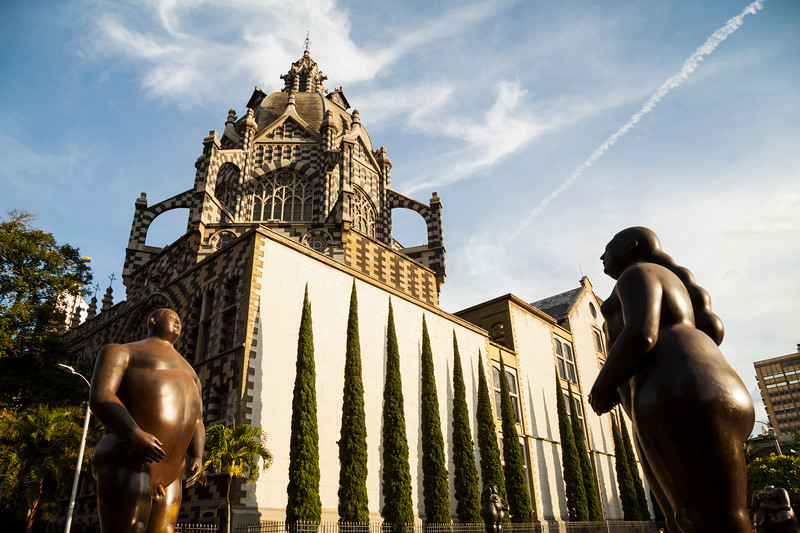
The city centre is home to Plaza Botero, a square populated by the playful, sometimes erotic, statues of the (still living) Medellín artist Fernando Botero Angulo (best known as Botero). Fashion is one of the city’s main industries, and there’s lots of unique (and super cheap!) streetwear, leisurewear and underwear for sale in the markets near the San Antonio metro station. (More shopping details in the listings below.)
For less flashy gay life, pedestrianized Calle 57a, near downtown’s Parque de Bolívar, is home to half a dozen small LGBTQ+ bars and pubs where it’s the easy-going patrons, not the ambience, that is the draw. Many queer people live in the working-class/middle-class highrise downtown neighbourhoods of Boston and Bomboná, and that’s also where many of the city’s saunas, sex clubs and motels are located.
Like so many big cities these days, parts of the downtown can be sketchy, especially after dark. Yet in Boston and Bomboná, you’ll see families and groups of friends in the evening hanging out on the sidewalk in front of their apartment buildings and in parks—paying attention to who’s around you and what they’re doing will help keep you safe.
Across the Río Medellín, which divides the city in two, the neighbourhood of Laureles—actually, the whole area from the stadium to Parque Belén—is a beautiful compromise between on-point El Poblado and the bustle of downtown. Though it used to be a foreigner-free zone, that’s quickly changing. Savvy visitors love its chill, low-rise vibe and its many lovely restaurants, cafés and boutiques, most of them much more affordable than El Poblado. Avenida 33, home to some of the less-touristy nightclubs, is also on this side of the river.
The once infamous, now famous, Communa 13 is on the mountainside just beyond these upper middle-class neighbourhoods. There are many Communa 13 tours that show how the residents used art to transform it from a crime hub into a destination. If this kind of tour gives you commercialized poverty-porn shivers, there are other emerging neighbourhoods, including Moravia, that you can visit on your own or as part of a tour.
Medellín’s gondola lines, part of the municipal transit system intended to connect poor mountainside neighbourhoods to the city core, are an attraction themselves, giving passengers a bird’s eye view of the valley. One gondola line goes through a forest to a huge ecotourism area called Parque Arví.
Medellín is also a great jumping-off point for day or weekend trips to cute mountain towns and farms. Several tour operators offer excursions with several stops, usually including the lakeside town Guatapé. Medellín’s altitude gives the city its famed year-round springtime weather, so if locals want some real summery heat, they’ll head to the lower-altitude pretty-but-steamy town of Santa Fe de Antioquia and stay at a hotel with a pool, which is about an hour’s drive away.
So much to do and see, we had to make some decisions. Here’s our guide to the best of LGBTQ2S+-friendly Medellín.
What to see and do
OUT in Colombia. Founded in 2016, this Colombia tour specialist knows exactly what its customers, primarily gay men, want. Its custom, all-inclusive tours replace all the usual travel headaches (transfers, navigation) with unique one-of-a-kind experiences. They’ll give you shortcuts to essential attractions, but they can also create tailor-made experiences. Want to paint your own street graffiti, meet a local fashion designer or find a secluded beach where you can go naked? These guys know how to make it happen. (Read more about them here.)
El Poblado. A visitor could spend weeks lounging in the various cafés, bistros and bars in Medellín’s hipster heaven. Newly remodelled Parque Lleras is the nucleus of it all. If you’re meeting a new friend, tell them you’ll meet them at this park because everybody knows it and it’s safe and very public.
Museo de Arte Moderno de Medellín (Cra. 44 #19a-100, El Poblado, Medellín). Though the institution dates back to 1978, the current state-of-the-art building opened in 2015. The exhibits are ever-changing with queer and trans artists definitely part of the mix. A great place to immerse oneself in contemporary Colombian creativity—or just have a coffee. The gift shop is excellent.
Museo Casa de la Memoria (Parque Bicentenario, Cl. 51 #36-66, La Candelaria, Medellín). This moving tribute to the city’s history—particularly how it has rebounded from the ersatz reign of narcoterrorist Pablo Escobar from the late 1970s until Escobar’s death in 1993—foregrounds the voices of its people, including the experiences of LGBTQ+ Paisas. Its various exhibits illustrate how violence, greed and hate can, indeed, be overcome. Please pass up a Pablo Escobar tour to come here.
Plaza Botero (Av. Carabobo, La Candelaria, Medellín). These 23 large-scale sculptures by Medellín artist Fernando Botero Angulo are one of the city’s must-see attractions. For the best photo-taking, don’t go too close to high noon—the light’s too bright and there are too many crowds taking too many selfies. Though Botero is, by all accounts, straight, works like “Adán,” “Hombre Caminante,” “Mujer con Espejo” and “Soldado Romano” have definite homoerotic themes.
Parque del Periodista (Cra. 43 #53-54, La Candelaria, Medellín). This tiny square is the epicentre of alt street culture in the downtown. Every night, poets and backpackers and sex workers and punks and locals and assorted vagabonds gather to drink booze purchased from the windows of local liquor stores. The scene might be a little too boho for some travellers, but it’s as Paisa as it gets.
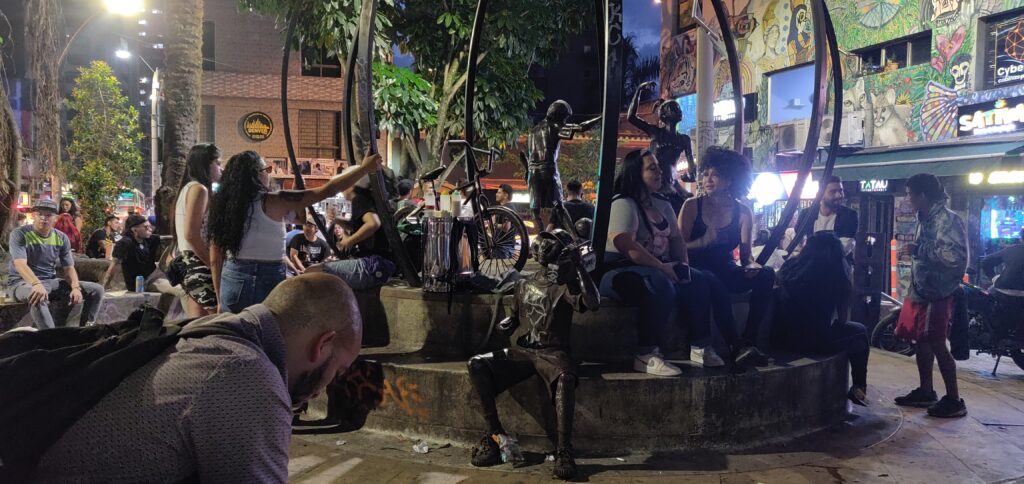
Jardín Botánico de Medellín (Cl. 73 #51d-14, Aranjuez, Medellín). A beautifully designed eco escape from the hustle and bustle of the city, it is also right across from the family-friendly Parque Explora (Cra. 52 #73-75, Aranjuez, Medellín, Aranjuez, Medellín), which has an aquarium and science exhibits.
Gondola ride to Santa Domingo and Parque Arví (start at the Acevedo metro station). Public transportation as tourist attraction? For the cost of a metro ride (less than US$1 in 2023), you can hop in one of the gondolas and go up, up, up, making two quick stops before arriving at Santa Domingo station. The views of the city along the way are amazeballs. Each gondola holds up to nine people, so you might be sharing the space elevator-style. If you want to keep going, transfer at the Santa Domingo station to the slightly-more-expensive Arví line for the 20-minute ride over forests to the eco-park. Arví is big—on arrival, you might want to sign up for one of the nature tours.
Capilla del Rosario (Cl. 9 Sur #83a-2, Medellín, Altavista, Medellín). Colombia’s official zona cafetera, located in the departments of Caldas, Risaralda and Quindío, is worth a visit—the landscape will blow your mind. But it’s more than a day trip, and the main coffee-growing region of the department of Antioquia (of which Medellín is the capital) is also a bit of a hike. So the location of this specialty coffee producer is super convenient and has an added bonus. Yes, they grow coffee, and offer a super-friendly educational experience about how it’s produced and processed. But this pretty mountainside farm also has fantastic views of the city.
Guatapé. About a two-hour drive from Medellín, and included in most of the day tours you can take from the city, this charming town, with its brightly painted facades, is one of the region’s must-sees. If you’re good with stairs and tight spaces, you can hike up El Peñón de Guatapé—a rock the size of an apartment building in the middle of the landscape—to take in the views of the valley. What looks like a natural landscape of rivers and lakes is actually a reservoir covering what used to be dry land—authorities actually had to relocate a village for the project.
Where to stay
Most foreigners stay in El Poblado, which is where most of the city’s hotels are located. Though pricey by Colombian standards, rooms are affordable enough for foreigners to try something uniquely boutique. Parque Lleras, as romantic as it is, gets loud at night, so if that’s a problem for you, avoid the hotels right next to it. If you want to stay downtown, an Airbnb rental is your best option. Though most boutique and mainstream hotels here are LGBTQ+-friendly, note that it’s common for Latin American hotels to prohibit unregistered guests. For hooking up, there are saunas (see the listings below) and by-the-hour motels.
The Click Clack Hotel Medellín (Cra. 37 #10a-29, El Poblado, Medellín). It’s probably better to categorize this spot as an “experience,” not just an accommodation. The quirky rooms, the smallest of which resemble cruise-ship cabins, surround an oasis-like courtyard, which is home to two restaurants, one Mediterranean-inspired, one Thai-inspired. On the roof, there’s a casual poolside resto-bar and a swank cocktail bar. Oh, and it’s all pulled together with a subtle nautical theme… and a videogame motif… and an astronaut character… who held a rainbow flag during Pride month. Maybe hotel-slash-art-project best describes it—there’s a gallery in the basement. They’re planning to build a new “wellness edition” across the street. Bogotá has a Click Clack, too.
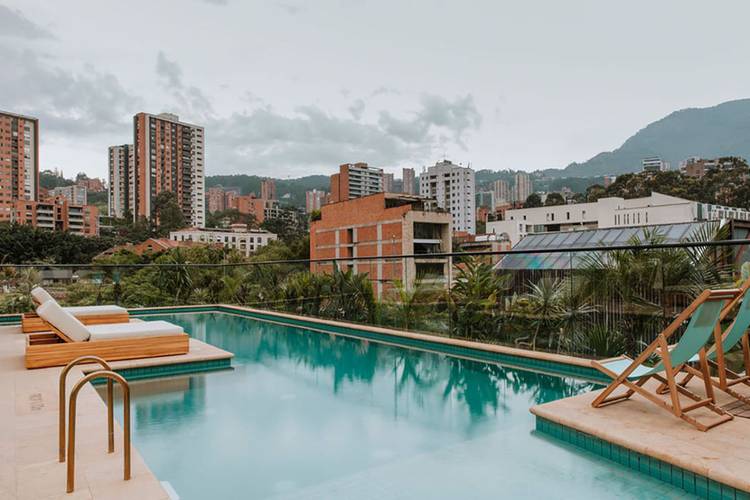
NH Collection Medellín Royal (Cra. 42 #5-Sur 130, El Poblado, Medellín). A few steps out of the action—and close to an upscale mall—the offering from the reliably LGBTQ+-friendly and reliably comfy and fashionable chain is always an excellent choice.
Masaya (Cl. 8 #43a-89, El Poblado, Medellín, El Poblado, Medellín). With a mix of private rooms and shared dorms, coworking spaces and, of course, a rooftop pool, this industrial-vibe property is perfect for digital nomads.
The Charlee Hotel (Cl. 9a #37-16, El Poblado, Medellín). One of the brands that helped establish the hip credentials of this zona rosa, this is a spot for party animals; once you find your way to the 17th-floor rooftop pool, you may stay here for your whole trip. You’re in the middle of the party here, so don’t freak out if you hear music late at night.
Hotel Roma (Cra. 50c #60-13, Prado centro, Medellín). The only hotel catering specifically to the LGBTQ+ community is in a hilly neighbourhood just north of downtown, very close to the bars of Calle 57a. The price point’s good, too.
INNTU Hotel (Transversal 39, Circular 74-B10, across from Laureles Park Number 2, Medellín). This “ecointelgente” is a stylish spa-like choice in the chill-but-cool neighbourhood of Laureles.
Where to eat
TEST Kitchen Lab (Cra. 34 #8a-10, El Poblado, Medellín). Using only Colombian-sourced ingredients, and a lot of imagination, this restaurant is a true culinary adventure. Dig into the tasting menu with smartly paired cocktails and wines. Be prepared to be surprised by the number of, and range of, ingredients in each dish.
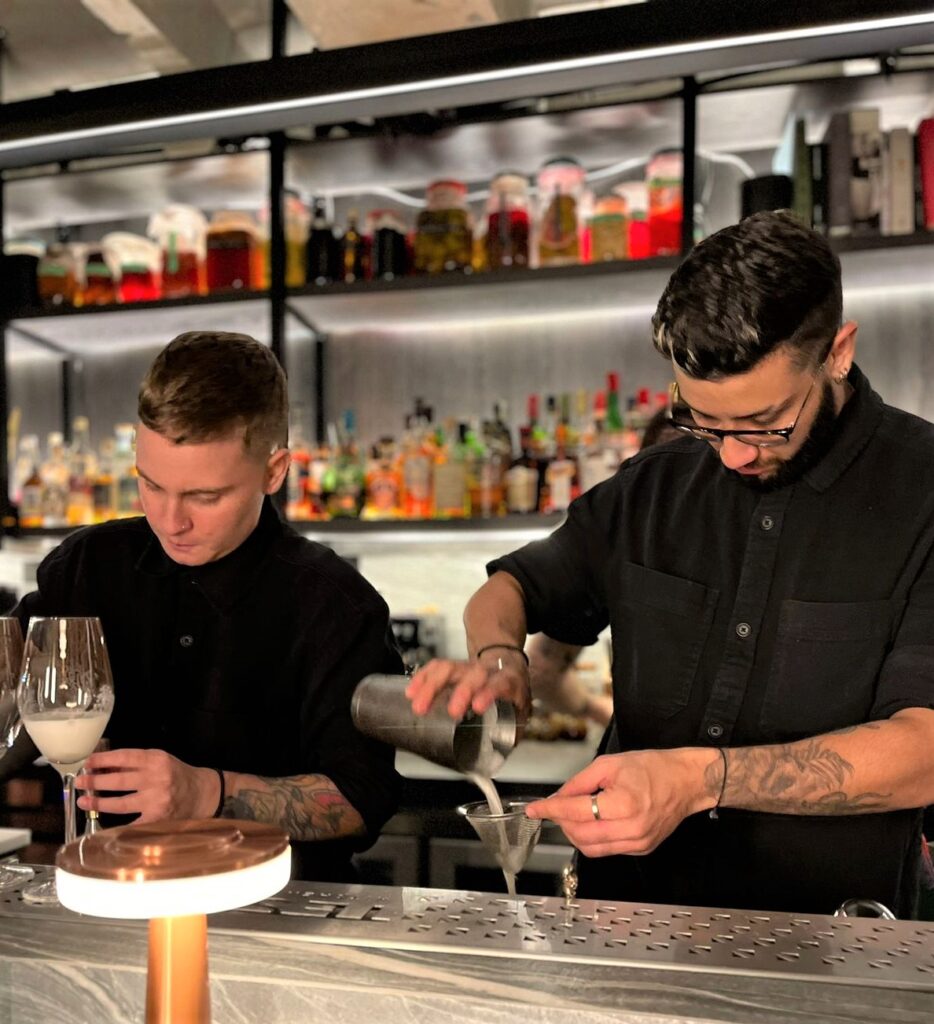
Lavocadería Manila (Cl. 13 #43d-23, El Poblado, Medellín). Avocado fettuccine, avocado rice, avocado burgers, avocado smoothies, avocado margaritas. This is a great casual eatery for those who like the green fruit. Those who don’t can guac off.
Carmen (Cra. 36 #10a-27, El Poblado, Medellín). The restaurant that’s perhaps most responsible for elevating the city’s culinary scene, and one that regularly makes “best of” lists, Carmen employs classic Colombian ingredients to ingenious ends, and serves them like art. There’s another location in Cartagena, and the owners are also behind the Colombian-Asian fusion restaurant Moshi (Cra. 36 #10a-45, El Poblado, Medellín) that’s just next door.
Mercado del Río (Cl. 24 #48-28, El Poblado, Medellín). Every city needs its upscale food hall and this one, across from the contemporary art museum, has a great selection of cuisine from around the world.
37 Park Medellín (Cra. 37 #8a-4, El Poblado, Medellín). With a location that merges public and private, city and nature, this stylish spot is Instagram-worthy. The bistro food is not bad, but you’re here for the vibe.
Where to party
Though people who follow promoters and events will discover one-off parties in various parts of the city, Medellín’s LGBTQ+ nightlife unfolds in basically three areas, each differentiated by price point: flashier places in El Poblado, less inhibited clubs and bars on and around Avenida 33 and no-fuss no-muss holes-in-the-wall downtown on Calle 57a.
Donde Aquellos (Cra. 38 #9a-26, El Poblado, Medellín). A patio cocktail bar with a view of all the action, this long-standing haunt might, early in the evening, look straight/mixed. But it gays up after 9pm and is where guys will exchange information about who’s doing what, what party is happening and what they they’re wearing to it. So many nights of hedonism begin here. But you can also have a nice date here, then turn in early for the night (psych!).
Bar Chiquita (Cra. 37 #8a-88, El Poblado, Medellín). With an interior full of campy bejeweled art objects and a patio that, on weekends, is packed shoulder-to-shoulder with hip, hot guys, this place doesn’t need shows to be a colourful night out. But it has shows, too! Outrageous drag performances with sexy go-go dancers. There’s also a location in Bogotá—and someone in your own city should pick up the franchise, it’s that much fun.
Querida (Cl. 10 #43b-61, El Poblado, Medellín). With Asian-inspired decorative flourishes, this danceclub/showbar attracts a lively young crowd for pop and electronic music. Because this is Medellín, even the backroom has creative touches: neon sculptures of dicks and oral sex.
Club Oráculo (Cra. 36 #8a-123, El Poblado, Medellín). You can tell from the wacky sculptural items—the giant bum looming over the dancefloor, for instance—that this three-in-one club is brought to you by the people who brought you Bar Chiquita. The main room is English and Latin pop/club, then there’s techno upstairs and Latin genre music in the courtyard. Drag and go-go boys, of course. The theme is “oráculo,” as in fortune teller, and also “orá culo,” as in “pray to ass.”
Discoteca Happy (Av. 33 #78-168, Laureles-Estadio, Medellín). This boisterous female-focused, mixed LGBTQ+ club attracts locals who want to dance, dance, dance. Low on pretensions, high on high energy.
Calle 57a (between Avenida Oriental and Cra. 47). This historic—and now pedestrianized—mini gay village, so far from El Poblado, is the true heart of working-class queer Medellín. The various venues, which open and close with some regularity, lack ambiance—many patrons will buy their drink at a bar then drink on the street. It’s great people-watching when it’s busy, and you’ll quickly discover that Paisas have no hesitation about coming up to strangers and starting conversations. El Machete (Cl. 57a #46-17), which has a 1970s macho atmosphere, is the biggest and probably longest-lasting venue here, serving cheap beer and spirits by the bottle.
La Cantina de Javi (Cl. 58 #47-18, La Candelaria, Medellín). Just across Avenida Oriental from Calle 57a, this Mexican-themed (!?) party palace is for those who like their nightlife straight up, no chaser. Show up in your pajamas—nobody cares. If you miss the two-for-one drink specials, don’t worry; the base price of the drinks is very cheap.
Where to gear up
Fashion—both design and manufacturing—is one of Medellín’s signature industries. Streetwear, beachwear and underwear are specialities. You can find innovative designs at excellent prices.
Orozco (Cra. 36 #10b-65, El Poblado, Medellín). Openly gay designer Jorge Orozco, who started out as a costume designer for theatre, makes denim feel high-fashion with exquisite tailoring and innovative cuts. His Poblado shop is always worth dropping by for a taste of what’s hot.
Dale Más (Cl. 10 #43-16, El Poblado, Medellín). For all your harness, puppy mask and short-short needs, this gay-oriented fetish store can sell you something locally designed and produced to wear to the clubs… or your bedroom… or someone else’s.
Centro Comercial Premium Plaza (Calle 30, Cra. 43a, Medellín). The city has several fine but ho-hum malls, but this one probably has the best assembly of mainstream Colombian brands.
El Hueco (Cl. 46 #54114 54-a, La Candelaria, Medellín). This old-school Latin American stall-style shopping plaza lends its name to the whole area, where vendors hawk cheap clothes on any surface they can find. Not for those who dislike retail chaos, but you can get fun stuff cheap. Haggling is often an option.
Carrera 70 between Diagonal 74b and Calle 30, Belén. Here’s a real insider’s tip. Colombian brands like Clever (Cra. 70 #31-33), Jor (Cra. 70 #30a-70) and Gigo (Cra. 70 #30a-144)—all of which design and sell the kind of creative underwear, swimwear and fetish garments that many gay men are obsessed with—have outlet stores on this unassuming residential street. Buy jockstraps, thongs, swimsuits and workout wear that will have jaws dropping for as little as US$5.
Where to cruise
Though Medellín does not quite have the sex club and backroom culture that you’d find in Bogotá, it does have an excellent sauna culture, though the number of them has shrunk over the last few years (farewell, Club de Tobi). Opening hours are typically 2pm to 10pm-ish, though they’ll sometimes stay open later for special events and holidays. The hard finish time can be a benefit; though there’s a real social aspect to Colombian saunas, with drinks at the bar and gossiping in the hot tub, guys often stop flirting to get down to business by 8pm. Then, after taking a shower, it’s off to the clubs.
Club 55 (Cl. 55 #45-44, La Candelaria, Medellín). Impeccably managed by a team of really friendly guys, and with a handsome clientele that skews toward young professionals, this well-designed sauna is the perfect mix of classy and horny. The courtyard bar has not one, but two Jacuzzis.
Cruising Fusión (Cra. 45d #57-44, La Candelaria, Medellín). This busy multilevel sauna, also very well run, has a few things going on. Yes, it’s a sauna, with toweled guys enjoying a maze of steam rooms, Jacuzzi, private rooms for claiming, a cinema and, yes, a pool. But it’s also a kind of cruising club, with some patrons staying in their street clothes to prowl around the drier areas. Strangely, it works.
La Casa Inclinada (Cra. 44 #46-38, La Candelaria, Medellín). Not where most visitors would end up, this no-frills sex club, run by someone who seems to be quite eccentric, judging by the website, has mandatory nudity and hosts occasional fetish events.
Max Avila Entertainment. This promoter hosts infamous large-scale gay sex-and-dance parties at various venues throughout the year.
Editor’s note: The cost of the writer’s trip was covered by OUT in Colombia, with support from Visit Santa Marta, Greater Medellin Convention and Visitors Bureau and ProColombia, as well as Hilton Santa Marta and Click Clack Hotel Medellín. The sponsors of the trip did not direct or review coverage. The views expressed are the writer’s own.
